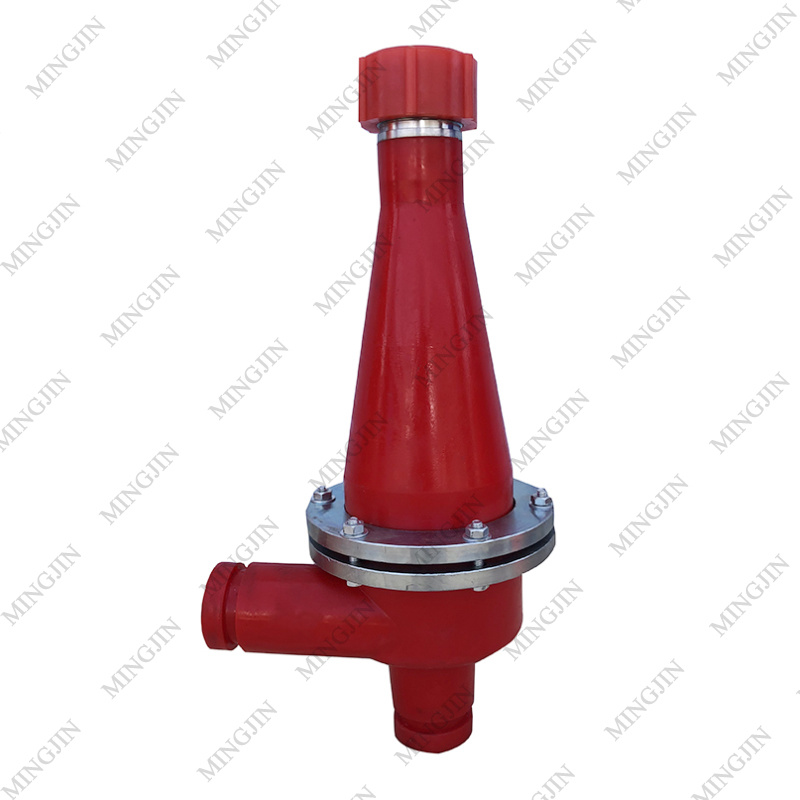Enhancing Efficiency in Chemical Processing: The Role of Drilling Fluid Hydrocyclone Separators
Jun 25,2025
In the chemical industry, particularly in the production of rubber and its derivatives, the efficiency of processes has a direct impact on product quality and operational costs. One of the critical components that contribute to enhancing these processes is the drilling fluid hydrocyclone separator. This innovative technology is designed to separate particles from drilling fluids, thereby improving

In the chemical industry, particularly in the production of rubber and its derivatives, the efficiency of processes has a direct impact on product quality and operational costs. One of the critical components that contribute to enhancing these processes is the drilling fluid hydrocyclone separator. This innovative technology is designed to separate particles from drilling fluids, thereby improving the overall performance of various chemical applications.
Drilling fluid hydrocyclone separators operate on the principle of centrifugal force. When drilling fluids containing solid particles enter the hydrocyclone, they experience a rapid rotation. This forces the denser particles to the outer wall of the separator, while the lighter fluids are drawn toward the center and exit through the top. This separation mechanism effectively removes unwanted solids from the drilling fluid, allowing for cleaner and more efficient processing.
One of the primary advantages of employing drilling fluid hydrocyclone separators is their ability to reduce the need for chemical additives. By efficiently separating solids from drilling fluids, these separators minimize the potential for contamination in subsequent processing stages, leading to purer end products. This is particularly important in the rubber industry, where impurities can adversely affect the quality and performance of rubber products.
Moreover, the use of hydrocyclone separators contributes to cost savings. By recycling drilling fluids, manufacturers can significantly reduce waste and lower the expenses associated with fluid disposal. Furthermore, cleaner drilling fluids result in lower wear and tear on equipment, ultimately extending the lifespan of machinery and reducing maintenance costs.
In addition to their economic benefits, drilling fluid hydrocyclone separators also support environmental sustainability. By minimizing waste and improving the recovery of resources, they align with the industry's increasing focus on environmentally friendly practices. This is particularly relevant as regulations become stricter and consumers demand more sustainable production methods.
The applications of drilling fluid hydrocyclone separators extend beyond the rubber industry. They are utilized in various sectors, including mining, oil and gas, and construction, wherever the need for efficient solid-liquid separation arises. Their versatility and effectiveness make them a valuable tool in any chemical processing context.
In summary, drilling fluid hydrocyclone separators play a vital role in optimizing processes within the chemical industry, particularly for rubber and its products. By enhancing separation efficiency, reducing chemical use, and promoting sustainability, they represent a forward-thinking solution for professionals looking to improve operational effectiveness and product quality. Understanding the capabilities and benefits of these separators can empower industry experts to make informed decisions that drive innovation and success in their operations.
Drilling fluid hydrocyclone separators operate on the principle of centrifugal force. When drilling fluids containing solid particles enter the hydrocyclone, they experience a rapid rotation. This forces the denser particles to the outer wall of the separator, while the lighter fluids are drawn toward the center and exit through the top. This separation mechanism effectively removes unwanted solids from the drilling fluid, allowing for cleaner and more efficient processing.
One of the primary advantages of employing drilling fluid hydrocyclone separators is their ability to reduce the need for chemical additives. By efficiently separating solids from drilling fluids, these separators minimize the potential for contamination in subsequent processing stages, leading to purer end products. This is particularly important in the rubber industry, where impurities can adversely affect the quality and performance of rubber products.
Moreover, the use of hydrocyclone separators contributes to cost savings. By recycling drilling fluids, manufacturers can significantly reduce waste and lower the expenses associated with fluid disposal. Furthermore, cleaner drilling fluids result in lower wear and tear on equipment, ultimately extending the lifespan of machinery and reducing maintenance costs.
In addition to their economic benefits, drilling fluid hydrocyclone separators also support environmental sustainability. By minimizing waste and improving the recovery of resources, they align with the industry's increasing focus on environmentally friendly practices. This is particularly relevant as regulations become stricter and consumers demand more sustainable production methods.
The applications of drilling fluid hydrocyclone separators extend beyond the rubber industry. They are utilized in various sectors, including mining, oil and gas, and construction, wherever the need for efficient solid-liquid separation arises. Their versatility and effectiveness make them a valuable tool in any chemical processing context.
In summary, drilling fluid hydrocyclone separators play a vital role in optimizing processes within the chemical industry, particularly for rubber and its products. By enhancing separation efficiency, reducing chemical use, and promoting sustainability, they represent a forward-thinking solution for professionals looking to improve operational effectiveness and product quality. Understanding the capabilities and benefits of these separators can empower industry experts to make informed decisions that drive innovation and success in their operations.
Key words:


